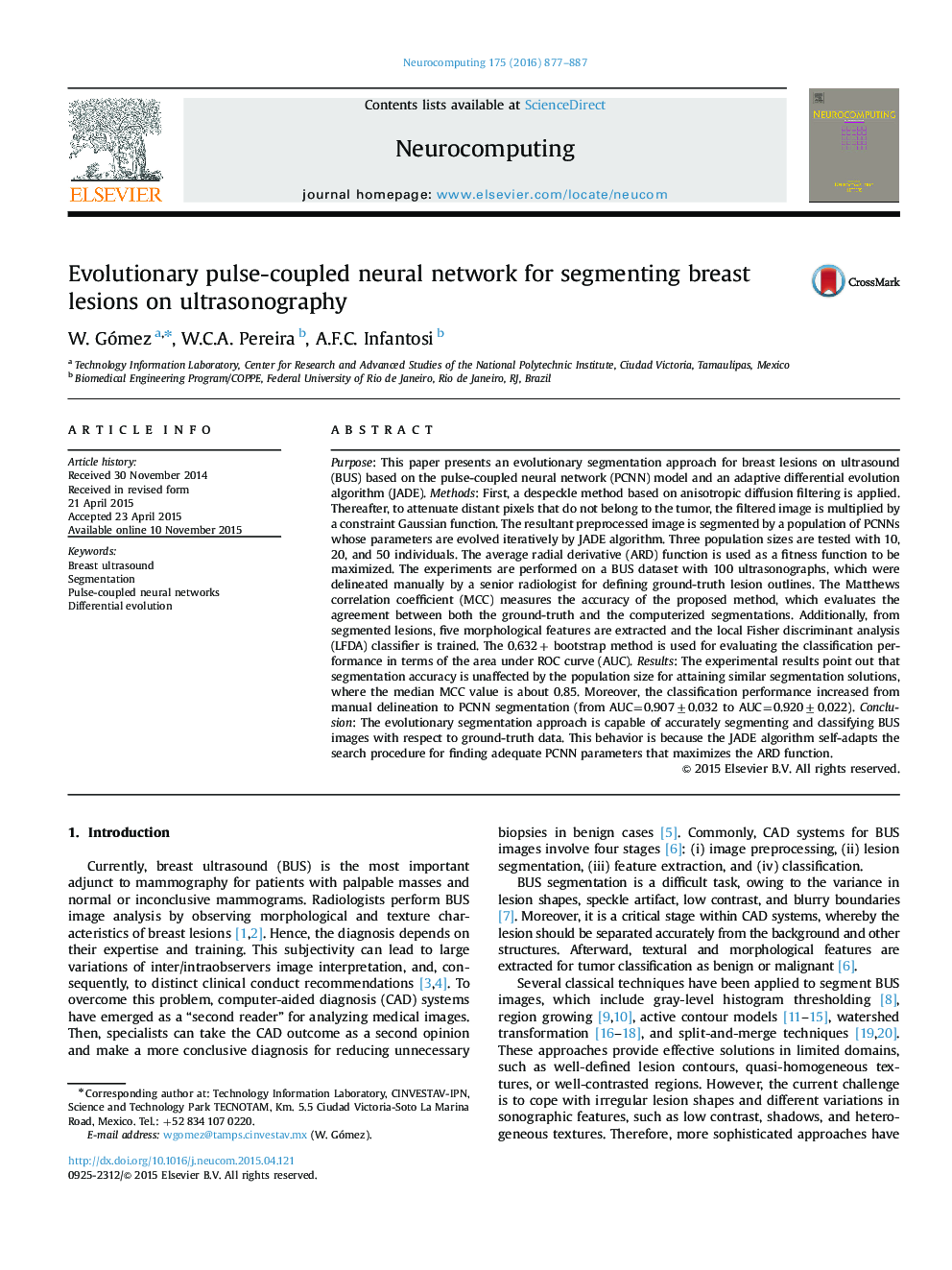| کد مقاله | کد نشریه | سال انتشار | مقاله انگلیسی | نسخه تمام متن |
|---|---|---|---|---|
| 407120 | 678129 | 2016 | 11 صفحه PDF | دانلود رایگان |
Purpose: This paper presents an evolutionary segmentation approach for breast lesions on ultrasound (BUS) based on the pulse-coupled neural network (PCNN) model and an adaptive differential evolution algorithm (JADE). Methods: First, a despeckle method based on anisotropic diffusion filtering is applied. Thereafter, to attenuate distant pixels that do not belong to the tumor, the filtered image is multiplied by a constraint Gaussian function. The resultant preprocessed image is segmented by a population of PCNNs whose parameters are evolved iteratively by JADE algorithm. Three population sizes are tested with 10, 20, and 50 individuals. The average radial derivative (ARD) function is used as a fitness function to be maximized. The experiments are performed on a BUS dataset with 100 ultrasonographs, which were delineated manually by a senior radiologist for defining ground-truth lesion outlines. The Matthews correlation coefficient (MCC) measures the accuracy of the proposed method, which evaluates the agreement between both the ground-truth and the computerized segmentations. Additionally, from segmented lesions, five morphological features are extracted and the local Fisher discriminant analysis (LFDA) classifier is trained. The 0.632+ bootstrap method is used for evaluating the classification performance in terms of the area under ROC curve (AUC). Results: The experimental results point out that segmentation accuracy is unaffected by the population size for attaining similar segmentation solutions, where the median MCC value is about 0.85. Moreover, the classification performance increased from manual delineation to PCNN segmentation (from AUC=0.907±0.032 to AUC=0.920±0.022). Conclusion: The evolutionary segmentation approach is capable of accurately segmenting and classifying BUS images with respect to ground-truth data. This behavior is because the JADE algorithm self-adapts the search procedure for finding adequate PCNN parameters that maximizes the ARD function.
Journal: Neurocomputing - Volume 175, Part B, 29 January 2016, Pages 877–887
